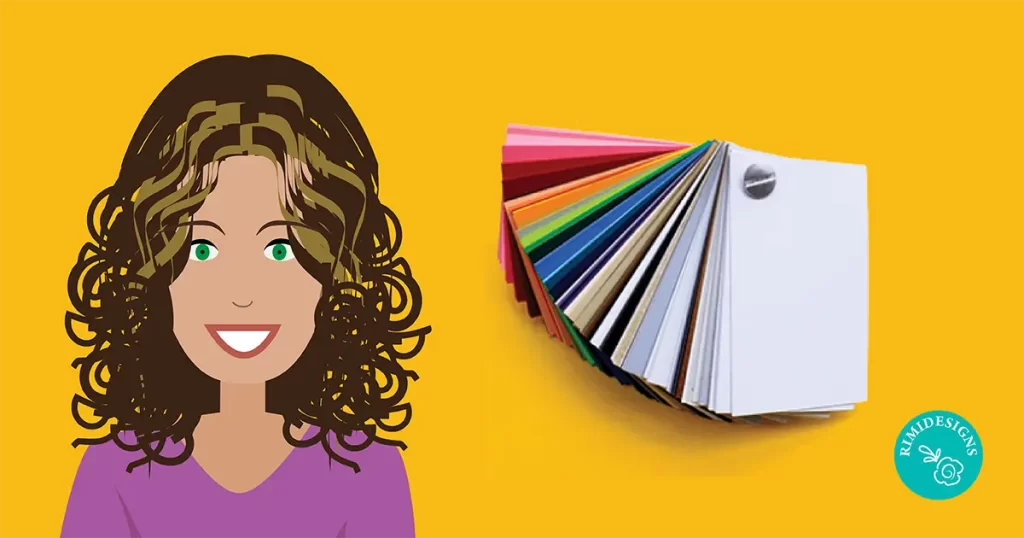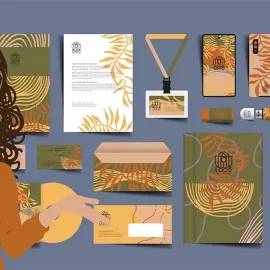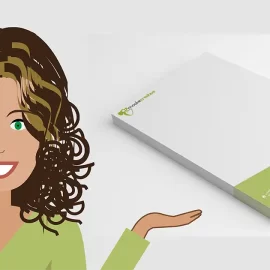
Choosing the Right Paper for Your Next Print Job
The paper you choose for your print projects can influence how others perceive your brand, speaking to your brands tone and quality. So, is your brand aware of all the options available to you?
Thickness and weight
Considering thickness, the thing to know is that generally the more a piece of paper weighs, the stiffer it will be. Typically, heavier papers are good for sign flyers, double-sided printed materials and professional presentation materials.
The print industry defines a pound as the basis weight of a 500-sheet ream of the paper at its basic size. This measurement is often stated using “#”, the pound symbol. For example, 500 sheets of 20# paper weigh 20 pounds.
Point, or caliper point, refers to the thickness of an individual sheet of paper when measured with a micrometer (e.g. 20pt).
Papers measured in points are typically “board grade” paper, which are slightly lower quality than paper measured in pounds. Thicker papers have higher point designations.
Brightness, whiteness and opacity
Brightness measures the amount of reflectance of a specific wavelength of blue light and is measured on a scale of 0 to 100 – the higher the number, the brighter the paper.
The brightness of printed materials can affect the readability—if paper is too bright the colour of the dark hues will contrast too much with the lightness of the paper, which make it difficult to read. Typically, most paper is printed at 60-90 per cent on the brightness scale.
Whiteness measures the reflection of all wavelengths of light across the visible spectrum. The whiteness measure is more in line with our visual perception.The higher the whiteness rating (which also uses a 0-100 scale), the whiter the paper.
Paper with a very high whiteness number can appear to have a blue tint, depending on what light source it is viewed under.
Opacity refers to the amount of light which is transmitted through the paper. Paper with a high degree of opacity does not let much light pass through it, while paper that has a low degree of opacity is more translucent or allows much light to pass through it.
Opacity determines the extent to which printing on a particular side of paper will be visible from the reverse side.
Types of coating
Coated and uncoated papers will effect the overall feel of your printed material.
Coated papers are those that have been coated by a compound or polymer to impart certain qualities to the paper, including weight, surface gloss, smoothness or reduced ink absorbency. The result is a smooth matte, semi-matte or silky finish.
Uncoated papers are those without coating and have no texture or feeling.
Coated paper results in a silky finish and while this can give of a higher-quality impression, it also becomes more difficult to read longer texts with this coating. For this reason, uncoated paper is the common choice for printed materials with a larger amount of text.
Types of coating include:
UV coating (ultra violet)
UV coating is a highly protective, ultra-shiny gloss coating. It provides an extremely hard finish that is chemical and abrasion resistant. It can be used on the entire piece or strategically placed on specific areas to make them stand out.Aqueous
This is a clear water-based coating that is thinner than UV coating. It provides a medium-gloss surface that deters dirt, fingerprints and scuff marks. It protects pieces, such as postcards and brochures, as they go through the mail and business cards in your wallet.Coated one side (C1S)
A cover stock that has a coating on one side and is dull on the reverse side. C1S papers are typically used for products like holiday cards or birthday cards, where you want the outside to pop with a glossy finish and for the inside to be writable.Coated two sides (C2S)
A cover stock that has a coating on both sides. This is typically used for flyers, brochures, booklets and handouts that will not be written on.
SOURCE: Imagine



